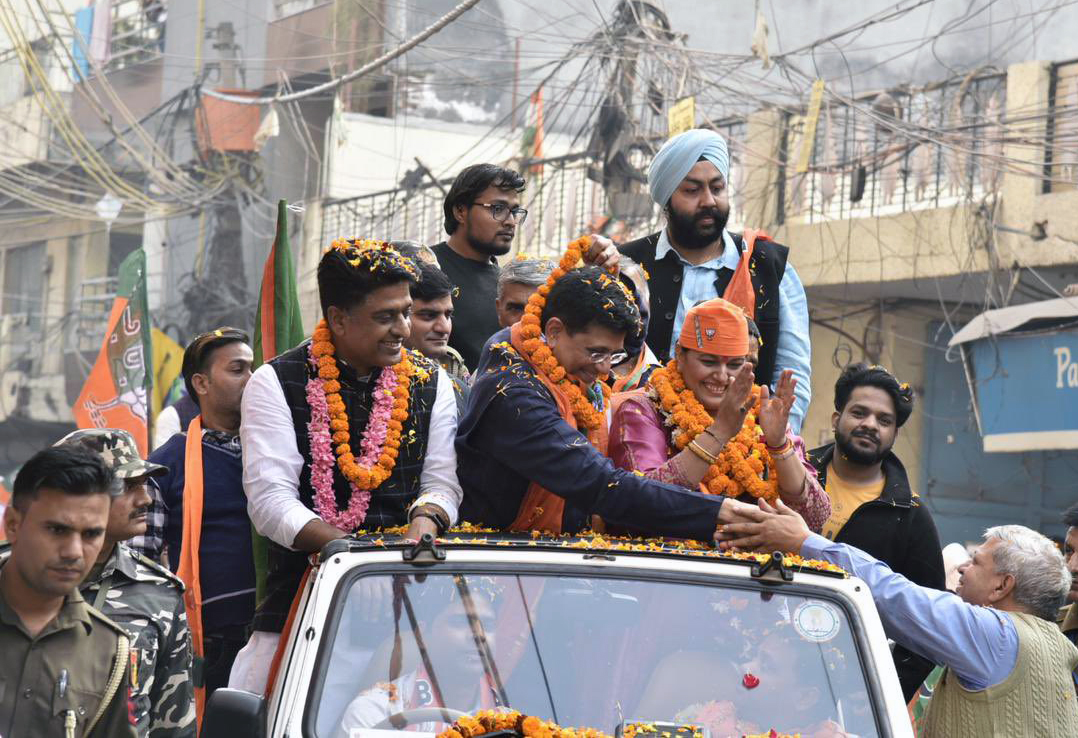


As parties ended with a heated campaign for the MCD election in Delhi on Friday where polling will be held on 4 December, the internal survey of Delhi BJP has shown that the party may win 170 of 250 wards. The survey had a sample size of 43,750 voters and was conducted between 13 November to 25 November, Delhi BJP media head Harish Khurana told PTI. BJP has launched several union ministers and chief ministers of other states to capture the issues of Delhiites as well as those from other states staying in Delhi.
The party is very upfront in targeting the next closest rival AAP’s handling of Air Pollution and cleaning river Yamuna. While nailing upon AAP’s failure, BJP is trying to look upon the local issues of homelessness and emphasizing ‘civic temperament’ to respect fellow citizens coming from diverse states living in Delhi. Recently, BJP inaugurated a rehabilitation centre in Kalkaji under the ‘In-Situ Slum Rehabilitation Project’ by handing over keys of flats to eligible Jhuggi-Jhopri dwellers at bhomiheen camps. The party is campaigning by emphasizing that the country is moving on the path of ‘Sabka Saath, Sabka Vikas, Sabka Viswas and Sabka Prayas’ (Everyone’s development together with each one’s faith and effort) to sway its voters.
On the other side, AAP is trying to keep the political sway of the campaign towards the civic issue of cleanliness in Delhi that revolves around the politics of garbage and development. Along with it, AAP has also promised political and financial powers besides the status of “Mini Councillors” to the city’s Resident Welfare Association (RWAs), if it wins the MCD election.
Amid this, CSDS-Lokniti has also conducted a survey to assess citizen perceptions on the performance of the government and their emerging preferences. Survey projects that the upcoming election will witness a straight fight between the AAP and BJP by relegating the congress to a distant third.
The survey highlights that when it comes to making a choice while assessing AAP’s performance, there seems to be a clear demarcation emerging between voters. Those from upper-caste backgrounds and from the upper-half bracket in terms of class residing in relatively well-off localities of Delhi are inclined towards BJP whereas the lower half of the social hierarchies tilt towards the AAP.
The CSDS-Lokniti report also suggests that BJP has a consolidated vote of Hindu upper castes but the support base of AAP among other caste groups seems to be higher in comparison to BJP and Congress. As far as the other religion’s vote base is concerned AAP seems to be leading with wider support as three in five voters from Muslim communities and close to two in three voters from other religious minorities preferred voting for AAP. The report also suggests that the Hindu OBC voters and middle-class voters are the main focus group for the party as AAP and BJP both are looking to gain substantial support as AAP is leading with very less margin in comparison to BJP, as per data.
As far as the statistics of vote share among parties since 2012 is concerned, it is being observed that the vote share of AAP in 2017 touched up to 26.21 per cent being a first-time contender in the MCD election. However, the voting percentage of the BJP remains more or less the same as in the 2012 MCD election which was around 36.5 per cent. This shows that AAP will be able completely to relegate congress from the major contender in the upcoming MCD election and could substantially gain voting percentage in the upcoming election. Thus, the political landslides of Delhi may favour AAP in gaining more seats in comparison to last MCD election but BJP will remain by holding upon its own issues of development of all.